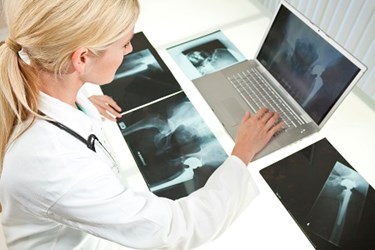Image-Sharing Technology Could Resolve Teleradiology Interoperability Issues

By Christine Kern, contributing writer

New cloud-based platform aims to make healthcare workflows more efficient.
A new cloud-based platform could potentially help streamline workflows behind teleradiology and make other parts of healthcare more efficient. Cody Ebberson, CEO and co-founder of MedXT, a Y Combinator company, has developed the new technology based on his experience in teleradiology which drew his attention to some of the factors that slow down image sharing in healthcare.
Among the challenges faced by teleradiology companies is the set related to interoperability, particularly establishing them and the financing the connections between systems. The sector continues to struggle with exchanging X-rays, CT scans, and ultrasound images efficiently, Ebberson observed in an interview with MedCity News.
According to MedXT’s website, health data is exchanged by fax, CD/DVD, or on a sheet of film using patients to transport them between providers. The machines that produce medical data like laboratory equipment, imaging (MRI, X-Ray, CT), electronic health records, and monitors pump data into on-site systems that were never designed to connect to the Internet. MedXT has created an alternative Cloud-based solution that avoids all of these issues, without requiring any additional investments in infrastructure.
MedXT works by providing the flexibility, ease, and mobility of the cloud to point of care. MedXT brings the power of RIS/PACS to clinics and practices by enabling clinicians to evaluate, diagnose, and treat patients remotely using its flexible universal image viewer. Already receiving images from hundreds of hospitals and clinics, MedXT offers an image-sharing network that allows outpatient clinics and primary care providers to not only minimize imaging storage and maintenance costs but also to satisfy the access requirements of patients and their community providers.
“That was my trial by fire in healthcare,” said Ebberson. “It was an operational void. I knew we could do a better job.”
Payment depends on how much radiology practices use the software-as-a-service. It is currently used in 300 facilities in 25 states and 11 countries such as Turkey, Hungary, India, Russia, Japan, the Philippines, and Vietnam. It uses a multilingual interface.
Even though MedXT received FDA clearance months ago, Ebberson said the company has kept a low profile so it could nail down the execution of its technology with early adopters.
The cloud-based technology means the company can extend it easily to other medical applications such as second opinion consults and medical education. Ebberson points out that it powers Crowdmed’s imaging component. CrowdMed is a service for crowd sourced diagnoses. It also provides images for a Reddit sub-community of radiologists who can review complicated and interesting cases on the channel.
Among other potential applications for the platform it has identified are:
- Hyper specialization in which complex cases are routed to the top specialist in a particular field for consults instead of relying on who is locally available.
- In the future, nurses, assistants and technologists will scan, sample and examine patients. Doctors will be “behind the digital curtain” planning care.
- Speed up long research and development cycle for medical devices and improve quality of orthopedic planning tools.
